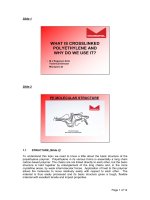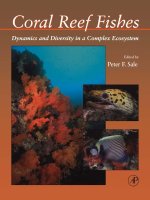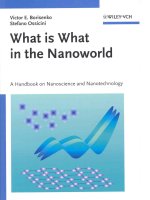- Trang chủ >>
- Khoa Học Tự Nhiên >>
- Vật lý
what is natural coral reef crisis jan 1999
Bạn đang xem bản rút gọn của tài liệu. Xem và tải ngay bản đầy đủ của tài liệu tại đây (17.56 MB, 302 trang )
What
Is
Natural?
Other Books
by the
Author
Beyond
the
Gene
Evolution
by
Association
Where
the
Truth Lies
What
Is
Natural?
Coral Reef Crisis
Jan
Sapp
NEW
YORK
OXFORD
OXFORD
UNIVERSITY PRESS
1999
Oxford
University
Press
Oxford
New
York
Athens Auckland Bangkok Bogota Buenos Aires Calcutta
Cape
Town
Chennai
Dar es
Salaam Delhi Florence
Hong
Kong
Istanbul
Karachi Kuala Lumpur Madrid Melbourne Mexico
City
Mumbai Nairobi Paris Singapore Taipei Tokyo
Toronto Warsaw
associated
companies
in
Berlin
Ibadan
Copyright
©
1999
by Jan
Sapp
Published
by
Oxford University Press
198
Madison Avenue,
New
York,
New
York 10016
Oxford
is a
registered
trademark
of
Oxford University Press
All
rights reserved.
No
part
of
this publication
may be
reproduced,
stored
in a
retrieval system,
or
transmitted,
in any
form
or by any
means
electronic,
mechanical,
photocopying,
recording,
or
otherwise,
without prior permission
of
Oxford University Press
Library
of
Congress
Cataloging-in-Publication
Data
Sapp,
Jan
What
is
natural?
:
coral
reef
crisis
/ Jan
Sapp.
p. cm.
Includes index.
ISBN
0-19-512364-6
1.
Crown-of-thorns
starfish.
2.
Coral reef ecology.
3.
Coral reef
ecology—Research.
I.
Title.
QL384.A8S27
1999
577.7'89—dc21
98-4634
735798642
Printed
in the
United States
of
America
on
acid-free
paper
For
my
mother,
Susan
Atkinson Sapp
This page intentionally left blank
CONTENTS
Acknowledgments
ix
Introduction
xi
1
Green
Island
1
2
Guam,
1968-1969
13
3 The
War
of
the
Worlds
35
4
Under Capricorn
49
5
Crown-of-thorns
Inquisition
65
6 A
Tree Fell
in the
Forest
77
7
Knowledge
and
Action
95
8
Oceans Apart
115
9
Remote
Control
127
10
Complexity
and
Stability
141
11
Cyclical Outcries
163
12
Crossroads
175
13
Coral Bleaching
and
Global Warming
189
14
Cassandra
and the
Seastar
203
Notes
217
Index
267
This page intentionally left blank
ACKNOWLEDGMENTS
I
am
grateful
for the
generosity
of
many coral reef scientists
who
lent valu-
able
time
in
interviews, engaged
in
correspondence, helped
to
clarify
my
thinking,
and
provided
me
with
a
diversity
of
literature: Charles
Birkeland, Roger Bradbury,
David
Challinor, Richard Chesher,
Lu
Eldredge,
Udo
Engelhardt,
William Fitt, Peter
Glynn,
Richard Grigg,
Jeremy Jackson, Robert Johannes, Richard Kenchington, Joshua
Lederberg,
John
Lucas, Ernst Mayr, Eric Mills, William Newman,
John
Ogden,
David Pawson, James Porter,
Donald
Potts,
Ira
Rubinoff,
Ste-
phen Smith,
Clive
Wilkinson,
and
Jeremy Woodley.
I
have also greatly
benefited
from
comments
from
those
who
read
one or all
draft
chapters
and
helped
me see
ways
to
make this
a
better book: Roger Bradbury,
Chuck
Birkeland, Richard Chesher,
Bob
Johannes,
Jeff
Levinton,
John
Lucas,
Tim
McClanahan,
and
John
Ogden.
I
also thank
Chuck
Birkeland
for
photographs
of the
crown-of-thorns
in
Micronesia. Peter Glynn pro-
vided
the
photographs
of
coral bleaching
and the
painted shrimp. John
Ogden
supplied photographs
of
Diadema.
The
picture
of the
triton eat-
ing
the
crown-of-thorns
was
taken
by
Johnston Davidson.
For the
photo-
graphs
of the
crown-of-thorns
in
outbreak conditions
in
Australia,
I am
most
grateful
to
Peter Moran,
and the
Australian Institute
of
Marine Sci-
ence.
I
also thank Kirk Jensen
and
Helen Mules
for
their editorial expertise.
Last
and
most important,
I
thank
my
wife,
Carole,
and my
children,
Will
and
Elliot
for
their support.
This
project
was
partly supported
by a
grant
from
the
Social Science
and
Humanities Research Council
of
Canada.
This page intentionally left blank
INTRODUCTION
There
are
more things
in
heaven
and
earth,
Horatio,
Than
are
dreamt
of in
your philosophy.
Hamlet,
I. v.
174-175
This
book
is
about knowledge
and
action.
It is
about
the
ways
in
which
environmental knowledge
is
produced
and
evaluated,
and the
dilemmas
faced
by
scientists
in the
midst
of
uncertainty.
What
is
natural?
What
is
the
balance
of
nature?
We
address these questions
by
exploring
one of the
longest
and
most poignant environmental controversies
in the
twentieth
century: whether
fierce
outbreaks
of the
crown-of-thorns
starfish
are
nat-
ural
features
of
coral-reef
life,
or
whether they
are
caused
by
human
inter-
ference.
The
crown-of-thorns
story
offers
a
window from
which
to
examine environmentalism
and its
relations with marine ecology
and
governments—from
the
environmental awakening
of the
1960s
to the
present.
I
first
learned
of the
crown-of-thorns
in
1989
when visiting
the
Austra-
lian
Institute
of
Marine
Science,
off the
Great Barrier Reef.
I had
arrived
with
an
interest
in
symbiosis.
Coral
reefs
were
a
good
place
to
visit because
they
are
among
the
most biodiverse communities
in the
world, aptly
compared
to
rainforests.
Cooperative relations among species abound.
xit
What
Is
Natural?
Coral-reef communities seem
to be so
integrated
and
interdependent
that some speak
of
them
as
superorganisms.
Are
such complex tropical
systems
more balanced
and
stable than ecosystems with
fewer
species?
Why are
coral
reefs
so
rich
in
species diversity?
I had
little idea
of
just
how
heated these questions
had
become over
the
previous
two
decades.
Certainly, fundamental concepts
and
assumptions
at the
heart
of
ecol-
ogy are at
stake.
But
there
is
more
to
this than
an
academic debate over
change
in
scientific
theory.
These
issues
are key to
understanding out-
breaks
of the
crown-of-thorns,
and in the
conservation
and
manage-
ment
of
coral
reefs,
more generally.
Few
marine biologists
had
ever seen
the
crown-of-thorns before
I960.
These creatures were large, about
60 cm (2 ft) in
diameter, cov-
ered
with sharp poisonous spines,
and
they were
thought
to be
very rare.
They
were noticed
in
plague proportions
on one
small coral cay,
a
tour-
ist
haven
on the
Great Barrier Reef.
By the end of
that decade, they were
reported
to be
present
in
huge numbers
on
many
of its
reefs
and to be
destroying many other reef communities throughout
the
Indo-Pacific.
They
traveled
in
massive herds
of
many thousands
of
individuals,
de-
vouring
coral
and
leaving
in
their wake devastation comparable
to a
burnt-out
rainforest.
They
mystified biologists. Regarded
as one of the
strangest ecological phenomena
of
this century,
the
crown-of-thorns
starfish
plagues continued throughout most
of the
1970s.
They
paused
for
a few
years
before
a
second
series
hit
during
the
1980s.
While
infes-
tations
remain common
on
many
reefs
worldwide,
a
third major out-
break
is
making
its
appearance today
on the
Great
Barrier
Reef.
During
the
late 1960s
and
1970s, news
of the
starfish
plagues
and
their
destruction
of
coral
was
heralded throughout
the
world
as the
kind
of
disaster predicted
by
such environmentalists
as
Rachel Carson
and
Barry Commoner.
They
were considered unnatural:
the
payoff
for
our
careless exploitation
of the
planet. Many warned that unless some-
thing
was
done
to
stop their spreading,
the
population explosions
would continue
to
increase with
the
most disastrous consequences
for
coral
reefs,
many small islands,
and
their inhabitants throughout
the
Indo-Pacific.
At the
same time, other scientists remained incredulous. Some
de-
nied
the
reality
of any
starfish
population explosions anywhere
in the
Pacific.
Still others admitted their existence,
but
considered
them
to be
natural, cyclical occurrences, with
no
long-term deleterious
effects.
Per-
haps they might even
be
beneficial
to
coral
reefs,
and
enhance
the
diver-
sity
of
life
upon
them. Therefore, they argued, attempts
to
control
the
introduction
xiii
starfish
populations
may be
irresponsible
and
result
in
more harm
than
good.
Were
the
outbreaks
natural?
Or
were they
human
induced?
What
would
be
their long-term consequences?
What
should
and
could
be
done
to
stop them?
While
these
issues
captured
the
attention
of
many
of
the
world's
leading
ecologists,
political
and
scientific
turmoil
persisted.
There
was
much speculation
in the
press. Special government commit-
tees
were
formed.
There
were testimonies
in the
United States Con-
gress,
and
intense discussions among coral-reef scientists throughout
the
world. Special crown-of-thorns sessions have been held
at
interna-
tional coral-reef symposia over
the
past three decades.
Discussions
of the
cause
and
effects
of the
outbreaks have involved
consideration
of
virtually every global environmental issue
of our
time:
over-fishing,
the
heavy
use of
pesticides
in
agriculture, atomic testing,
the
human
population explosion
and
ever-increasing coastal develop-
ments,
the
clearing
of
tropical
forests,
as
well
as the
proposal
in the
1960s
and
1970s
to
join
the
Pacific
and the
Caribbean with
a
sea-level
canal through
the
isthmus
of
Panama. Tropical marine scientists
throughout
the
world
are
deeply concerned about
the
destruction
of
coral
reefs.
Since
the
1980s,
the
cause
and
effects
of the
starfish
plagues
have been discussed together with another widespread environmental
disturbance whose cause remains uncertain: coral bleaching
and its as-
sociation with global warming. Mass mortality
of
coral
due to
bleaching
has
been observed repeatedly
and
with
increased frequency since
the
1970s,
especially
in the
eastern
Pacific
and
Caribbean.
Whether
the in-
crease
in
coral-reef bleaching
is
evidence
of
global warming
due to
hu-
man
activities
is a
question
yet to be
fully
answered.
Environmental disturbances caused
by
human activity
are
generally
called
anthropogenic.
But we
could
be
more precise.
Those
changes
caused
by the
overuse
of
synthetic pesticide sprays, increases
in CO2
from
the
burning
of
fossil
fuels,
CFCs
(chlorofluorocarbons),
and
other
greenhouse gases,
as
well
as
over-fishing
due to
"more
efficient"
fishing
technologies,
for
example, could
be
called
"technogenic."
Many
envi-
ronmentalists have challenged
the
notion
of
human social progress
based
on
ever-expanding industrial
and
technological production.
Critics
often
dismiss environmentalists' claims
of
human-induced
global environmental change; they
say
they
are ill
founded,
and
highly
exaggerated.
1
The
charges
and
countercharges
of
environmental
and in-
dustrial groups
are all
bids
for
public support
for
government action
or
inaction. Environmental science deals with
the
relations
of
knowledge
xiv
What
Is
Natural?
and
power,
and all
agree that understanding
the
scientific
issues
in
envi-
ronmental controversies
is
important
for an
informed citizenry.
The
crown-of-thorns
story will take
us on
expeditions
to
tropical
venues
around
the
world,
in and out of
marine laboratories, govern-
ment committees,
and
technical journals. Much
of the
early contro-
versy
took
place
in
newspapers
and
magazines.
The
narratives
and
images drawn
by
journalists
and
scientists provide
colorful
illustrations
of how the
crown-of-thorns
was
portrayed
and
understood
in
popular
culture. Some government committees, formed
to
determine
the
scope
and
significance
of the
plagues, were charged with incompetence,
de-
ception,
and
cover-up.
Through
interviews with leading environmental
scientists
we
will explore their recollections
and
perceptions
of the is-
sues
they confront.
Plagues
of
many kinds have captured public attention over
the
past
few
years.
A
stack
of
books
has
reminded
us of the
Fourth
Horseman
in
the
Bible's Book
of
Revelation.
2
All
carry
the
lesson that nature will
avenge itself against those
who
carelessly abuse
it—that
pestilence
and
death will
be
unwittingly summoned. Outbreaks
of new and old
dis-
eases
defy
our
former presumption
of
just
a few
decades
ago—that
anti-
biotics,
vaccines,
and
doctors
had
saved
us
from
such threats.
The
dramatic increases
in the
worldwide movement
of
people
and
goods,
wars, overpopulation,
and
pollution have also made
the
world more
vulnerable
to
ecological disasters.
The
oceans,
not
long
ago
seen
as
end-
less
resources,
can no
longer
be
taken
for
granted.
Too
often, however, those publicizing
the
reality
of new
global
and
human-induced catastrophes appeal
to
"the balance
of
nature"
as the
norm against which human disturbances
can be
measured. Yet, defin-
ing and
proving
the
existence
of
such
a
"balance
of
nature"
are the
most
perplexing
issues
in
community ecology. Although
we
often
hear biolo-
gists
and
environmentalists speak
of
"the balance
of
nature," nature
itself
may be
unstable
and
more unpredictable than
is
generally
thought. Boom
and
bust,
from
an
influenza
epidemic
or
sudden
plagues
of
locusts
to
mysterious declines
in
sought-after
fish
may
actu-
ally
be the
rule
in
nature. Moreover, ecologists suspect
that
certain kinds
of
environmental disturbances
may
actually
be
good
for
ecological
communities because they keep species that might dominate
from
be-
ing
able
to do so, and
allow opportunity
for
many other species
to
per-
sist.
Ecological processes
may be
operating
on
temporal
and
spatial
scales
that
far
exceed
the
scope
of
most ecological studies.
And all
this
makes studying
the
causes
and
effects
of
large-scale environmental
changes, distinguishing between what
is
natural
and
what
is
Introduction
xv
anthropogenic,
and
deciding
upon
what action
to
take,
all the
more
dif-
ficult.
There
are
still other aspects
of
complexity
to
consider.
We can ap-
proach
the
crown-of-thorns controversy
in
much
the
same
way as the
ecologist does outbreaks
in
nature.
How do
controversies begin?
What
inflames
and
sustains them?
How are
they resolved?
Those
scientists
who
studied
the
crown-of-thorns came
from
diverse specialties.
Differ-
ent
approaches
and
geographic locations
often
spawned divergent per-
ceptions
and
solutions.
But
when following this story
we
often
encounter bewildering
difficulties
in
distinguishing
effects
due to the
internal
processes
of
science
from
those
due to
nonscientific
issues.
Critics
of
environmental activists
often
insist that
we
should search
for
"the
scientific
truth
and
nothing
but the
truth"
to
resolve environ-
mental controversies. Yet, many environmental problems
may
require
immediate action
and
cannot wait
for the
kinds
of
rigorous demonstra-
tions typically carried
out in
laboratory science.
Many
scientists have
examined
the
social
and
political aspects
of the
crown-of-thorns contro-
versy
at
different
stages
of its
development.
We
will learn
of the
lessons
they drew about public participation
in
science,
and
their
own
behavior
in
public
forums.
The
tension between environmental
"advocacy"
on
the one
hand,
and
maintaining
scientific
"objectivity"
and
professional
credibility
on the
other,
is
incessant. Untangling
the
"nonscientific"
from
the
"scientific"
in
global environmental controversies
is,
however,
often
as
difficult
as
separating global anthropogenic change
from
natu-
ral
processes.
We can
identify
and
talk about them
for
analytic conve-
nience,
but to
understand
and
participate
in
such environmental
issues
we
need
to
know
how
nature, science,
and
society interact
as an
inte-
grated whole.
This page intentionally left blank
What
is
Natural?
This page intentionally left blank
1
GREEN
ISLAND
To find
that
the
little-known inhabitant
Acanthasterplanci
had
the
capacity
to
destroy
its own
habitat came
as a
surprise
to
many,
and
there was,
in the
early
stages
of
destruction,
a
general reluctance
to
accept
the
evidence.
John
Barnes,
1966
Acanthaster
planci
was
virtually unknown
by
coral-reef scientists when
Jack Barnes published
a
short paper
in
Australian Natural
History
entitled
"The
Crown
of
Thorns
Starfish
as a
Destroyer
of
Coral."
!
Barnes told
of
how he had
come
to
know
it. A
medical doctor
and
naturalist,
he had an
interest
in
poisonous marine animals
and he was
well-known
for
alerting
the
public
to the
dangers
of the
extremely venomous "sea wasp"
or box
jel-
lyfish.
In the
late
1950s,
he had
become curious about reports
of the
exis-
tence
of a
large, spiny "stinging"
starfish
in
Queensland
waters.
But
sightings
of it
were
infrequent
and he had
given
up
hope
of
ever seeing
one. Even experienced divers considered
the
seastar
a
great rarity.
In
I960,
special demonstration visits were made
to
inspect
one
large
specimen that
had
taken
up
permanent residence
in a
patch
of low
coral
on one of the
reefs
at
Green Island,
a
popular tourist haven
on the
central
part
of the
Queensland
coast. Adult Acanthaster grow
to
about
60 cm in
diameter
and
possess many
(9 to 21)
arms covered with very sharp spines.
Visitors noticed that
a few
corals
had
"circular dead patches, bone white
2
What
is
Natural?
and
about
the
size
of the
star."
At first,
they were
thought
to be
"long-term resting places"
and
caused
by the
"smothering"
of the
pol-
yps.
2
In the first
months
of
1962, reports
of
more
and
more
crown-of-thorns
sightings around Green Island reached Barnes.
They
included
stories
that
its
spines
had
caused human injury
and
illness
to
unwary
tourists
wading
on
reefs.
The
symptoms
included
severe
pain
for
several hours
and
protracted vomiting every three
or
four
hours
for
four
days.
A
low, oval, wooded coral cay, Green Island stands only
a
meter above
high tide.
Three
kilometers long
and
nearly
2
kilometers wide,
it is
made entirely
of
pulverized coral
and
sand washed
up by
wave action
from
the
surrounding
reef.
Located about
27
kilometers
off the
coast
of
the
city
of
Cairns,
it is in
easy reach
of a day
boat trip. Visitors came
from
all
over
the
world
to lie on the
white sand beaches, swim
in the
warm green waters, explore
the
forest
and its
bird
life,
or
just
enjoy
a
picnic.
It was a
magnet
for
naturalists, writers,
and
photographers.
3
For
many,
the
outstanding attractions were
the
magnificent coral
reefs
around
the
island:
the
many-colored
staghorns,
plate corals, anemones,
sponges,
fans,
and
giant clams.
It was
quite easy
to
explore this coral gar-
den by
swimming over
it,
drifting
across
it in a
glass-bottomed boat,
or
simply
wading over
the
reef
flats at low
tide.
Lloyd Grigg managed
an
underwater observatory
on the
island.
A
crocodile hunter,
fisherman,
diver,
and
amateur naturalist, Grigg
teamed
up
with
Vince
Vlassoff,
an
experienced
sea
captain
and
salvage
expert,
to
construct
the first
effective
underwater observatory
on the
Great Barrier Reef.
In
1955, they designed
and
built
a
massive, cylindri-
cal
70-ton
steel chamber, with thick
glass
windows.
They
attached
floats to it,
tipped
it
off
into
the
harbor
at
Cairns,
towed
it to the end of
the
jetty
at
Green Island, sank
it to the
seafloor,
and
anchored
it
down
amid
a
lush
forest
of
magnificent coral
and
darting shoals
of
brightly
colored
fish.
4
It was a
very
successful
tourist attraction
for
several years.
But,
in
1962, Grigg
told
of
large herds
of
crown-of-thorns moving
northward
on a
"front" approaching
his
underwater observatory.
When
blemishes
appeared near
his
observatory,
he
instituted regular
day and
night inspections.
He
soon discovered that
the
coral damage
was due to
feeding,
not
"smothering."
With
constant vigilance
he was
able
to
offer
partial
protection
to
that small area
and
make observations
on the
hab-
its
of
Acanthaster}
By
1963,
there
was
still
not
much
change
in the
underwater scene.
But
within
the
next twelve months
the
infestation assumed overwhelm-
ing
proportions, fanning
out
into coral westward, northward,
and
east-
Green Island
3
ward
of the
jetty.
Before
large herds
of
Acanthaster
began
to
destroy
them,
these coral gardens could
be
reached
by
glass-bottomed boats
in
all
weathers, comfortably
and
quickly,
giving
thousands
of
people
an
opportunity
to see a
truly representative sample
of the
complex reef
en-
vironment. Boat crews worked strenuously
to
preserve this area, every
week removing
by
hand
as
many
of the
starfish
as
they could.
The
star-
fish
tend
to
wrap themselves around
the
branches
of
blue staghorn cor-
als,
and
boat crews were
forced
to
wear thick gloves
and use a
steel spike
to
dislodge
them
and
bury them
on the
beach.
They
died quickly
out
of
water—their
many
feet
or
arms retract, their sharp spines flatten out,
and the
body collapses
from
dehydration; within thirty minutes they
are
dead.
Despite these
efforts,
coral destruction accelerated
month
by
month.
By
the end of
1964, glass-bottomed boats carrying tourists were divert-
ing
further
eastward ahead
of the
advancing horde.
The
"glassies" were
taking visitors
out to
more exposed waters
and
nearing
the
practical
limits
of
their travel. Blake Hayles, manager
of
transport
and
accommo-
dation
facilities
on
Green Island, decided
to
concentrate
his
defense
in
one
selected area,
a
patch
of
only
2
acres
where
he
employed
a
diver
to
remove
the
starfish.
In the
ensuing
fifteen
months more
than
27,000
starfish
were taken
from
that patch.
The
record
for a
single
day was
373.
6
To
many local people, this expensive operation could only delay
the
inevitable. Although divers managed
to
save
the
special coral area
visited
by
tourists, about
80% of the
coral
on
Green Island Reef
was de-
stroyed. Such
a
massive environmental upheaval
as the
mass destruction
of
coral
by the
crown-of-thorns
seemed
to
have
no
recorded precedent,
as
far as
Barnes
could
tell.
7
Nor
would
one
expect
it.
After all,
he
rea-
soned, coral occupied
a
central place
in the
coral-reef community.
It was
the
main
feature
around which
the
diverse
other members adapted their
behavior.
Coral
begins
life
as a
minute unprotected larva swimming
in
great
numbers among
the
microscopic world
of
plankton.
If the
great ocean
currents maneuver
the
larvae
to a
suitable habitat, they attach
to the
bottom.
Each becomes
a
polyp—a
sea
anemone
in
miniature, complete
with
a
cylindrical
body
capped
by a
ring
of
tiny tentacles
and a
central
mouth.
As it
continuously divides, each
new
coral
polyp remains
at-
tached
to the
founder
by a
thin
membrane.
The
polyp secretes calcium
carbonate
to
form
a
hard white skeleton. Each polyp
has its own
shallow
"hole"
in the
communal skeleton into which
it
retreats during
the day
or
when
danger threatens.
But it
cannot withdraw completely.
Its
soft,
colorful
tissues remain exposed
to the
elements
and to
predators.
4
What
Is
Natural?
Although each polyp stays small,
the
colony
of
budding
and
dividing
polyps steadily increases
in
size
and
forms
massive coral boulders.
These
coral boulders grow slowly
and may
require more
than
a
hundred years
to
reach
a
diameter
of 2 to 3
meters. Coral trees,
in
which
the
skeleton
becomes
a
branched
or
delicately laced structure, grow more rapidly.
Through
millennia,
the
steady accumulation
of
coral skeletons
and the
skeletons
of
other reef creatures builds
the
massive bulk
of the
reef.
They
are
cemented together
by
rapidly growing algae,
the
coralline
al-
gae,
that secrete
a
hard, slippery
form
of
calcium carbonate. Together
this assemblage
of
plants
and
animals creates
the
form
and
structure
of
the
coral community.
Coral
reefs,
nature's most spectacular, exotic,
and
crowded ecological
communities, slowly evolved over
a
period
of
almost
fifty
million years.
The
largest,
the
Great
Barrier
Reef,
is
about
2000
kilometers (1250
miles)
long
and
composed
of
about
2000
individual
reefs.
Several
of the
Pacific's
beautiful
coral atolls, small, isolated, ring-shaped islands,
are
exposed portions
of
limestone
edifices
over
a
mile
thick.
Their
bases rest
on the
peaks
of
long-submerged volcanoes.
It
was a
pretty reasonable assumption that dependent
life-forms
would
be
compatible with
the
continuing existence
of
coral.
So it was
no
small surprise, Barnes remarked, that "the little-known inhabitant
Acanthctsterplanci
had the
capacity
to
destroy
its own
habitat.
. . . Un-
fortunately,
the
facts
are now
beyond dispute
and
after
five
years
of
pop-
ulation expansion this spiny seastar
is now
consuming coral
and
disturbing
the
ecology over
a
wide area."
8
Barnes
described
Acanthasters
extremely
effective
feeding technique.
Most large predators
find
coral unacceptable food.
Its
thin layer
of
tis-
sue
is so
diffused
over
its
irregular limestone skeleton that
it
cannot
be
economically harvested.
A few
fish,
crustaceans,
and
worms nibble
at
coral
colonies,
but the
crown-of-thorns
fed on
them
exclusively.
While
most animals must bring their food
to
their stomach (and thus
find
it
difficult
to
attack
the
massive coral boulders),
the
starfish
can
bring
their stomach
to the
food.
It
everts
its
membranous
stomach
through
its
mouth
and
spreads
it
over
the
coral tissue.
After
it
seals
off
an
area equal
to its
surface
coverage, digestive
juices
pour
from
its
extruded volumi-
nous digestive membrane
and
liquifies
the
coral polyps
into
a
greenish
slime.
When
the
stomach retracts, only
the
pure white calcareous (lime-
stone) skeleton remains.
The
starfish
moves
on.
Algae
and
other marine
growths settle
on the
porous exposed coral skeleton,
the
scar turns grey,
then
green,
then
dirty yellow-brown. Soon
a
ragged growth
of
algae
darkens
the
dead coral.
The
starfish
climbs
up
from
its
cover, feeding
Green
Island
5
mainly
at
night,
and
Barnes
noted
that
it
seemed
to
have
a
preference
for
branching species, especially
the
large blue staghorns. "Failing
these,"
he
wrote,
"it
selects smaller branching
forms,
or
plate, shelf
and
boulder corals,
in
that order."
By
1966, along
with
the
destruction
of
coral
at
Green Island,
at
nearby Arlington Reef more
than
9
miles
of
coral
was
said
to be
reduced
to
debris.
The
reefs
of
Michaelmas,
Upolu,
Clack,
Batt,
and the
Frank-
land Islands
and
Port Moresby were reported
to
have patchy
but
high
concentrations.
10
Barnes thought
it
reasonable
to
expect that
the
popu-
lation explosion would spread
to
encompass
all the
Great Barrier
Reef.
11
But
biologists were
as
ignorant
of the
circumstances
that
enabled
the
seastar
to
escape
its
normal restraints
as
they were
of the
general biology
of
Acanthaster,
its
natural enemies,
or its
place
in the
ecology
of
reefs.
Coral-reef biology
was
still
in its
infancy.
Little
was
known
of the re-
quirements
of
most
of the
great diversity
of
species
and the
relationships
necessary
for
their coexistence
on a
living
reef.
Historically,
the
scien-
tific
study
of
coral
reefs
began with Charles Darwin's famous voyage
on
the
Beagle
in the
early
1830s.
12
Darwin described corals
of
many types,
obtained some impression
of
their distribution
in
depth
and the
subma-
rine contours
of
coral
reefs,
and
theorized
on
coral-reef formation.
In
the
late nineteenth century
and
early twentieth century, research
on
coral
reefs
was
based largely
on
geographical
surveys
and
subsequent
museum descriptions
of
coral skeletons.
The
living animal
and its
ecology were largely
overlooked.
13
There
were
few
exceptions. Most
scientific
knowledge
of
coral
reefs
was de-
rived
from
expeditions. Among
the
most famous
was the
Great Barrier
Reef Expedition
of
1928-29
which established
a
marine laboratory
for
thirteen months
at Low
Island
in
North
Queensland.
Led by Sir
Maurice Yonge
of the
University
of
Glasgow,
and
sponsored
by the
Royal Society
of
London,
the
records
of
this historic expedition con-
tained
basic data
on
plankton,
the
organisms that live
on the
beds
of
reefs,
and on the
metabolism
of
corals.
14
After
the
Second
World
War, intensive geological
and
oceanographic
studies
of
atolls
in the
Pacific took place.
They
were almost entirely
American, driven
by
military interests
and
largely concentrated
on the
Marshall
and
Caroline Islands.
These
investigations were intensified
before
and
after
the
nuclear bomb tests
at
Bikini
and
adjacent atolls
during
the
1950s.
There
was
also
a
major geological expedition
to Kon
Tiki
Atoll
in the
Tuamotu Archipelago that provided valuable informa-
tion about reef formations
in the
South
Pacific
and
comparisons
with
Atlantic
reefs.
15
6
What
h
Natural?
Tropical marine laboratories remained scarce,
and
huge gaps extend
in
biologists' understanding
of the
long-term ecological patterns
of
coral
reefs.
16
So it was not
surprising that
so
little
was
known
of
Acanthaster
and its
place
in
coral-reef ecology. "Until more
is
learned,
"
Barnes
wrote,
"it is
difficult
to
predict where
the
depredations will end,
or
what
will
end
them."
He was
hopeful
that
this "plague," this "gross
imbalance,"
was
self-limiting.
In
time,
he
thought,
it
would
exhaust
its
food
supply
and
then subside. "The reef habitat
is
enormous,
and
resil-
ient beyond calculation. Despite
the
heavy damage
in
some sections
there were survivors, more than adequate
to
restock
the
environment
as
opportunity
offers."
17
Other
observers were
not
nearly
so
optimistic
that
the
plague would
be
self-limiting
and the
gross imbalance would
correct
itself.
In
1963, Barnes contacted
the
chairman
of the
Great Barrier Reef
Committee,
Robert Endean, about human injury attributed
to the
crown-of-thorns. Formed
by the
Royal Geographical Society
of
Austra-
lia
at the
time
of the
Great Barrier Reef Expedition,
the
committee
was
composed
of a
small international group
of
naturalists
to
further scien-
tific
research
and
conservation
in the
area.
It had
established
a
modest
marine station
on
Heron Island
in the
1950s.
Endean
was a
marine tox-
icologist
at the
University
of
Queensland
in
Brisbane.
Much
of the
stunning variety
of
life
on
coral
reefs
was
sustained
by
interactions
in-
volving toxic chemicals
and
venoms
as
well
as
attractants. Coral
reefs
were
nature's greatest pharmacological storehouses.
In
fact,
Endean
was
able
to find
significant funding
for the
Heron Island station
from
the
Swiss
pharmaceutical giant, Roche.
His
laboratory
in
Brisbane also pro-
duced
a
series
of
headline-grabbing discoveries
on the
venom
of the
stonefish
and
blue-ringed octopus
to
more far-reaching work
on tu-
mor-inhibiting chemicals.
Endean
was
often
in the
media
and
appearing
on
television,
ex-
pounding
on the
wonders
of the
Great Barrier Reef.
He was an
outdoorsman
and a
public
figure,
with
a
broad knowledge
of the
natural history
of the
reef.
However,
in the
early
1960s,
he had
never
seen
the
crown-of-thorns
and had
never heard
of
people being poi-
soned
by a
starfish.
After
obtaining specimens
for
investigation,
in
1964,
he and
Barnes published
a
short
note
on the
venomous spines
of
the
starfish
in the
Medical
Journal
of
Australia,
recommending
that
tourists
wear thick shoes when walking
on
reefs.
18
This
marked
the be-
ginning
of a
sharp turn
in
Endean's career. Research
on the
crown-of-thorns would lead
him
from
a
smooth
path
of
academic dis-
tinction
into
rocky public disputes with government leaders
and
gov-









